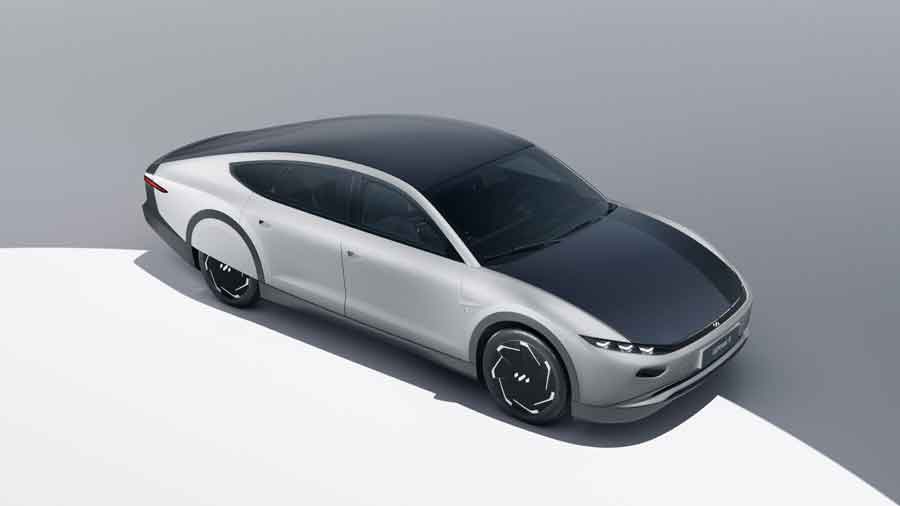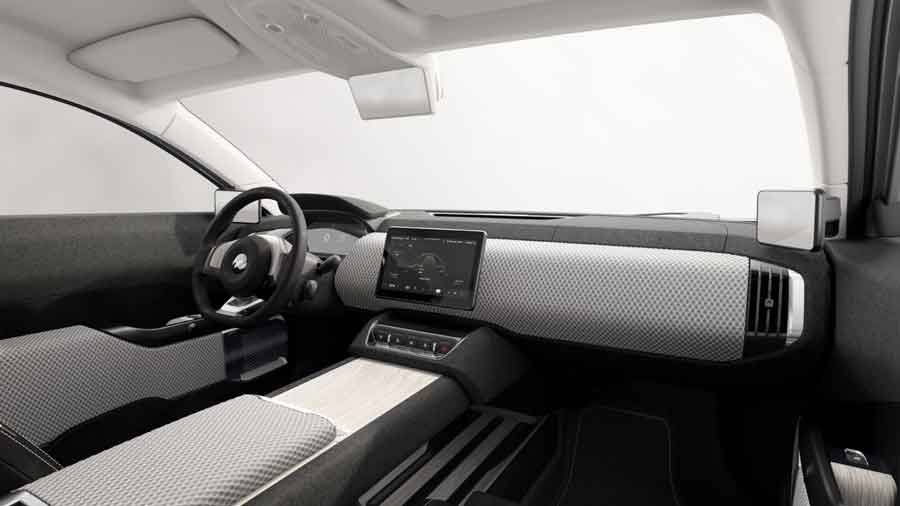Send this article to a friend:
June
10
2022

Send this article to a friend: June |
 |
Lightyear 0 production solar car could run for months without charging
Having scaled its workforce up to 500 people and hooked up deals with more than 100 suppliers, Lightyear is deadly serious about this venture and ready to start manufacturing. Its first car is this four-door fastback electric sedan, with enough onboard battery to deliver a very solid 560 km (348 miles) of freeway driving at 110 km/h (68 mph), even without the sun shining. That's a pretty impressive number; in WLTP testing, the Lightyear 0 delivers 625 km (388 miles) of range, or nearly 4 percent more than Tesla's Model 3 Long Range AWD. Lightyear says it's developed the most efficient electric drivetrain ever, and that these range figures come from a battery pack holding just 60 kWh. For comparison, the Model 3 Long Range AWD is reported to run an 82-kWh pack.
Lightyear claims the 0 is so efficient that it uses just 10.5 kWh per 100 km at 110 km/h highway speeds So even if that WLTP range is a fair way short of what the company was hoping for during high-speed testing back in February, the Lightyear still pulls more range out of significantly less battery than the Tesla, using just 10.5 kWh per 100 km (62 miles) while doing 110 km/h on the highway. Part of this comes down to low drag; Lightyear says the 0's drag coefficient of 0.19 makes it the most aerodynamic family car ever built. Part of it comes from specially developed Bridgestone tires designed to reduce rolling resistance. But part of it also comes from a deliberate focus on efficiency at the expense of performance: the 0 takes a full 10 seconds to accelerate from 0-100 km/h, and will top out at just 160 km/h (99 mph). Tesla has trained us to expect hair-raising acceleration, and the Model 3 Long Range AWD can get you to 100 in four seconds flat on the way to a top speed of 233 km/h (145 mph). Lightyear has no interest in playing these games. It'll feel flat-out slow next to a Tesla. But it'll spend far less time on a charger. Solar panels can't give you a full battery charge on a sunny day, but they can certainly make a contribution – and here's where Lightyear's efficiency-first approach pays off. Under ideal conditions, the solar panels covering the hood and the fastback roof can chip in up to 1.05 kW of constant trickle charging. 
The Lightyear 0 carries five square meters of high-efficiency solar panels on its hood and fastback roof Over the course of a full summer's day, Lightyear says that can power up to 70 km of driving. That's twice as far as the lightning-quick Roman legions could march in a day. Add in a fully topped-up battery, and Lightyear says that if your daily commute's less than 50 km (31 miles), you can run this thing for months, and thousands of kilometers, before needing to plug it in. The solar charging can contribute up to 10 km (6.2 miles) of range per hour. On a household plug, it'll charge at 32 km/h (20 mph), and it'll fast-charge at up to 520 km/h (323 mph) where the infrastructure's available. The rest of the car looks ... well, fine, I suppose. Seats for five, plenty of luggage space, and the vegan interior, made out of plant-based leather, recycled PET bottles and rattan palm, looks nice enough. There's a 10.1-inch touchscreen to handle navigation and infotainment, and it's all pretty cushy-looking. 
10.1-inch infotainment tablet on a pretty clean dash For a reality check, the solar charging figures above all assume the system's performing at its absolute peak, and as anyone who runs rooftop solar can tell you, it's rare to have your system smashing out peak power. So it'll be fascinating to learn how well this thing does the job in real-world conditions over the course of a year. The Lightyear 0 is also ludicrously, unforgivably expensive. Only 946 will be built, with deliveries to start in November, and each one's asking a ridiculous €250,000 (US$266,000). Should they sell, the company says it'll be set up and ready to move forward with a solar car for the people, with a starting price point of €30,000 (US$32,000) and a target production date around the start of 2025. We feel like we've heard this one before. Ah well, I guess there's always the little Squad solar car for US$6,500, or the Sono Sion solar hatch for US$31,000. Still, Lightyear's hyper-efficient machine definitely brings some goodies to the table, and it's an intriguing first offering from a company that seems genuinely ready to give solar motoring a proper shot. Check out the launch party below. Source: Lightyear
|
Send this article to a friend:
 |
 |
 |